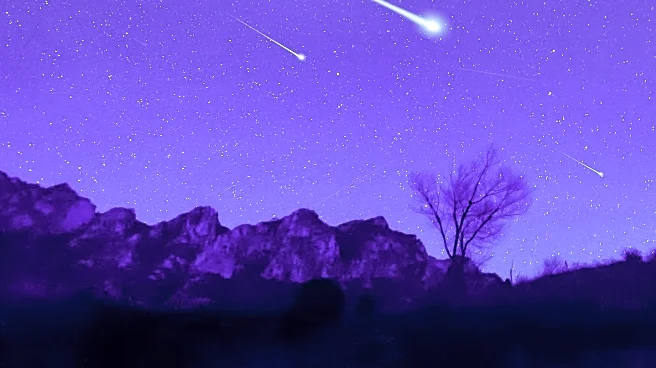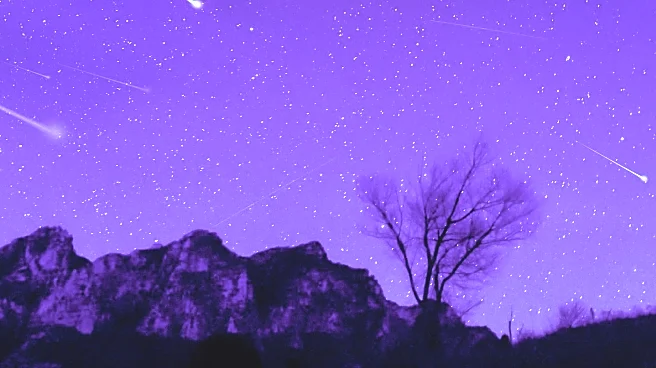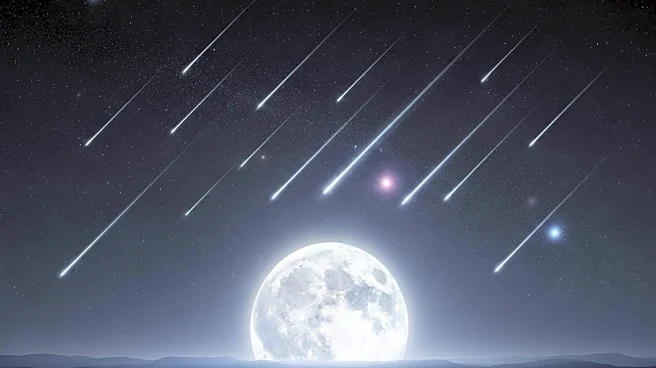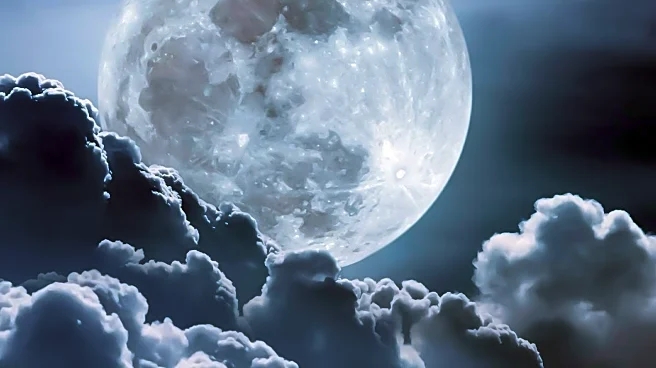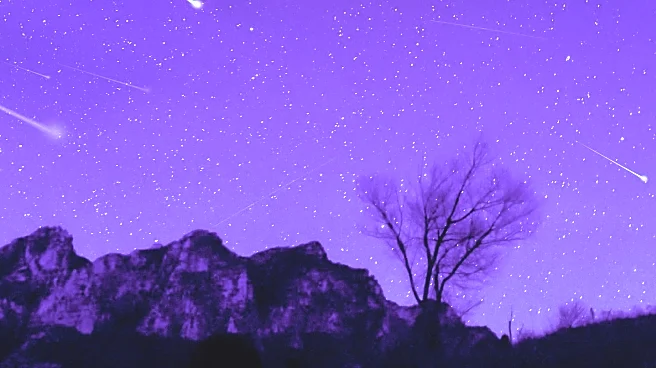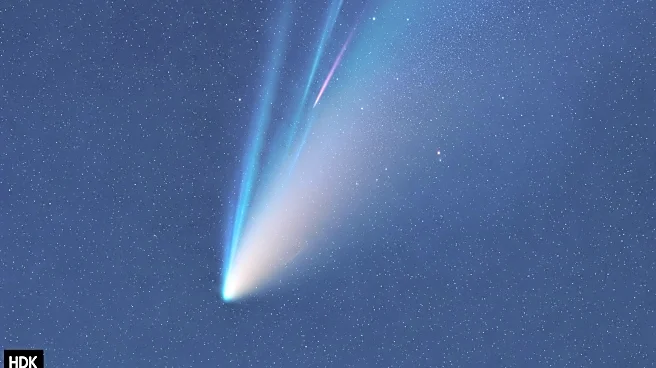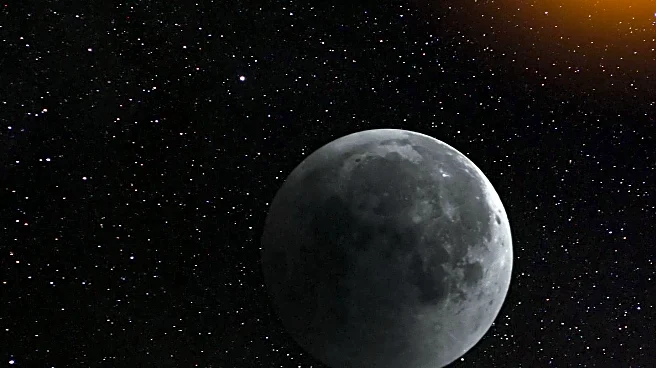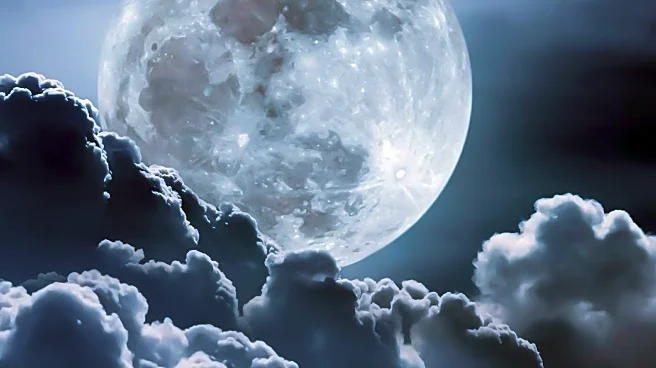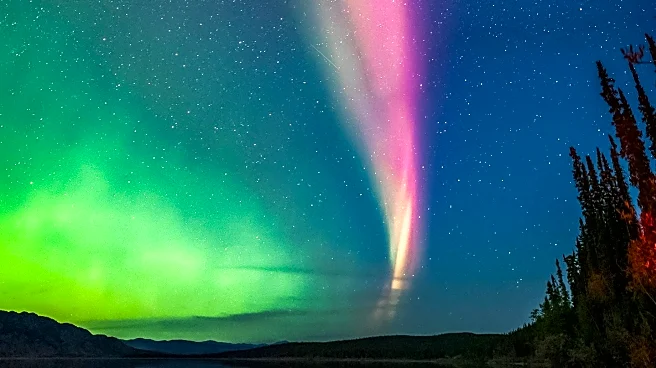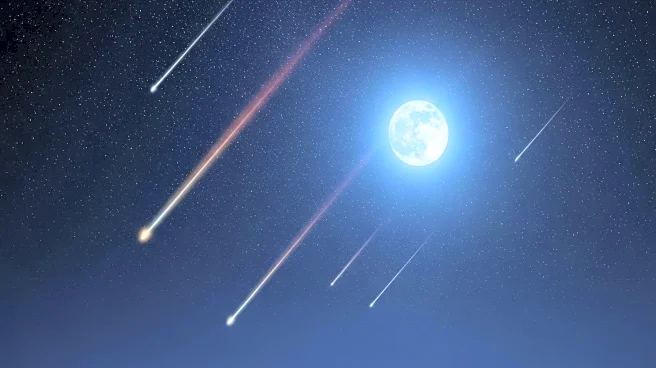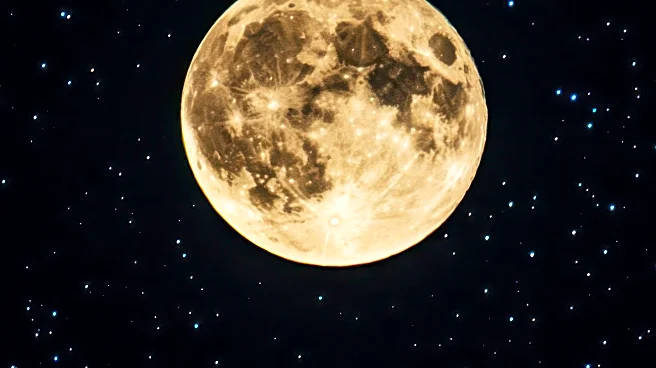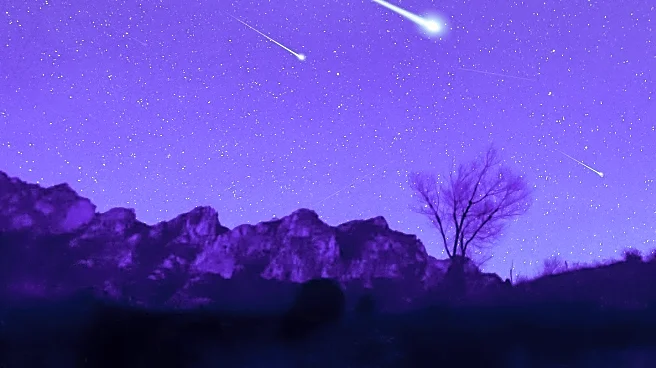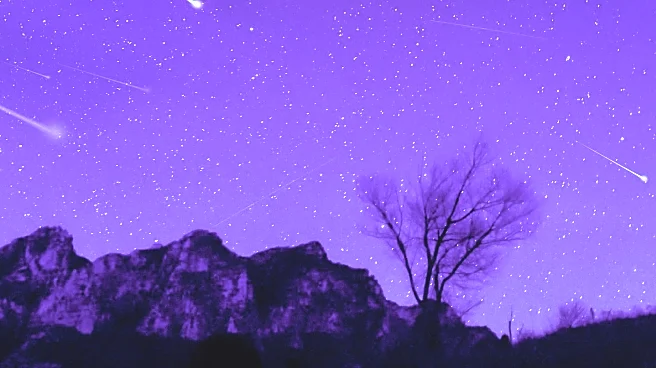What is the story about?
What's Happening?
On October 6, 2025, the first supermoon of the year, known as the Harvest Moon, will rise prominently in the autumn sky. This event marks the first full moon of autumn in the Northern Hemisphere, traditionally signaling the end of the harvest season. The moon will officially turn full at 11:47 p.m. EST on October 6, appearing bright and full on the nights surrounding this peak. The Harvest Moon is notable for its golden-orange glow, which is most striking during the 15-20 minutes after local moonrise. This year, the Harvest Moon also qualifies as a supermoon, appearing slightly larger and brighter than usual due to its proximity to Earth, sitting just 224,599 miles away. The supermoon occurs because the moon's orbit around Earth is elliptical, bringing it closer at certain points. Additionally, the Draconid meteor shower will peak on October 8, offering a chance to see shooting stars, although the moon's brightness may obscure some meteors.
Why It's Important?
The Harvest Moon and accompanying supermoon provide a unique opportunity for stargazers and astronomers to observe celestial phenomena. The event highlights the interplay between lunar cycles and agricultural traditions, as the Harvest Moon historically allowed farmers to extend their work into the night. The supermoon aspect draws attention to the moon's elliptical orbit and its effects on lunar visibility. The Draconid meteor shower adds to the spectacle, although its visibility may be reduced by the moon's brightness. This convergence of astronomical events underscores the importance of understanding celestial mechanics and their impact on Earth-based activities, offering educational opportunities for schools and science enthusiasts.
What's Next?
Following the Harvest Moon, October will continue to be a significant month for astronomical events. Two comets, Lemmon (C/2025 A6) and SWAN R2 (C/2025 R2), will make their closest approaches to Earth, coinciding with the peak of the Orionid meteor shower on October 21-22. These events will occur under the dark skies of a new moon, providing optimal conditions for viewing. The next full moon, known as the Beaver Moon, will rise on November 5, presenting the largest supermoon since 2019. These upcoming events offer further opportunities for observation and study, encouraging public interest in astronomy and celestial phenomena.
Beyond the Headlines
The Harvest Moon's cultural significance extends beyond its astronomical features, as it is deeply rooted in agricultural folklore. The full moon's light historically enabled farmers to work late into the night, a tradition that highlights the moon's role in human activities. The supermoon phenomenon also raises awareness about the moon's influence on tides and its gravitational effects on Earth. As public interest in astronomy grows, these events may inspire discussions on the importance of preserving dark skies and reducing light pollution to enhance celestial observations.
AI Generated Content
Do you find this article useful?
